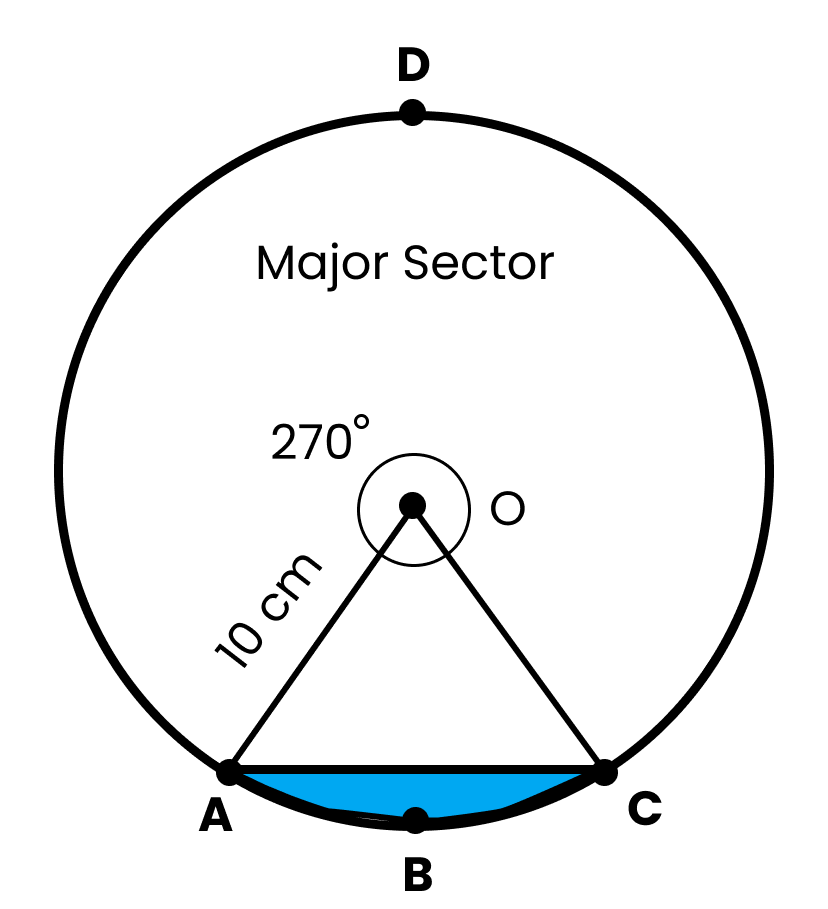Class 10 Maths Chapter 11 Questions and Answers with Step-by-Step Solutions
NCERT Solutions For Class 10 Maths Chapter 11 Areas Related to Circles (2025-26)
FAQs on NCERT Solutions For Class 10 Maths Chapter 11 Areas Related to Circles (2025-26)
1. What is a sector of a circle as per Class 10 Maths Chapter 11?
A sector is the region of a circle enclosed by two radii and their corresponding arc, much like a slice of pizza. Its area is calculated using the formula (θ/360) × πr², where θ is the angle between the two radii.
2. How do you find the area of a segment of a circle?
The area of a segment is found by subtracting the area of the corresponding triangle from the area of its sector. For a minor segment, the formula is (Area of Sector) – (Area of Triangle). This is a key concept in areas related to circles.
3. What is included in the NCERT Solutions for Class 10 Maths Chapter 11?
NCERT Solutions for this chapter provide clear, step-by-step answers for every exercise question. They cover all formulas for finding the area of sectors, segments, and combined plane figures, helping students solve problems accurately and efficiently for their board exams.
4. Where can I find a free PDF for Areas Related to Circles Class 10 NCERT Solutions?
You can download a Free PDF of the NCERT Solutions for this chapter from Vedantu’s website. This PDF contains detailed answers to all textbook questions, allowing you to study offline and revise the chapter anytime without an internet connection.
5. What is the formula for the length of an arc of a sector?
The length of an arc of a sector with an angle θ and radius r is given by the formula (θ/360) × 2πr. This formula calculates the length of the portion of the circle's circumference that forms the sector's curved boundary.
6. How can NCERT Solutions for Areas Related to Circles Class 10 help with exams?
These solutions explain the correct application of formulas for every problem in the NCERT textbook. Practicing with them helps in understanding the logic, managing time better, and familiarizing yourself with the types of questions asked in board exams.
7. How do you calculate the area of combinations of plane figures involving circles?
To find the area of a combined figure, first, break it down into basic shapes like sectors, segments, triangles, and squares. Then, calculate the area of each individual shape and add or subtract them as required by the figure's geometry.
8. What is the difference between a major sector and a minor sector?
A minor sector is the region corresponding to the smaller arc, where the central angle is less than 180°. A major sector is the region corresponding to the larger arc, where the central angle is greater than 180°.
9. Are the Class 10 Maths Chapter 11 question answers aligned with the latest syllabus?
Yes, the NCERT Solutions provided by Vedantu for Class 10 Maths Chapter 11 are fully updated and aligned with the latest CBSE syllabus. They cover all topics and exercises present in the current rationalised NCERT textbook.
10. What are the main formulas to learn for Areas Related to Circles questions and answers?
The three key formulas are: Area of a sector = (θ/360)×πr², Length of an arc = (θ/360)×2πr, and Area of a segment = Area of the corresponding sector – Area of the corresponding triangle. Mastering these is crucial.




















 Watch Video
Watch Video





































